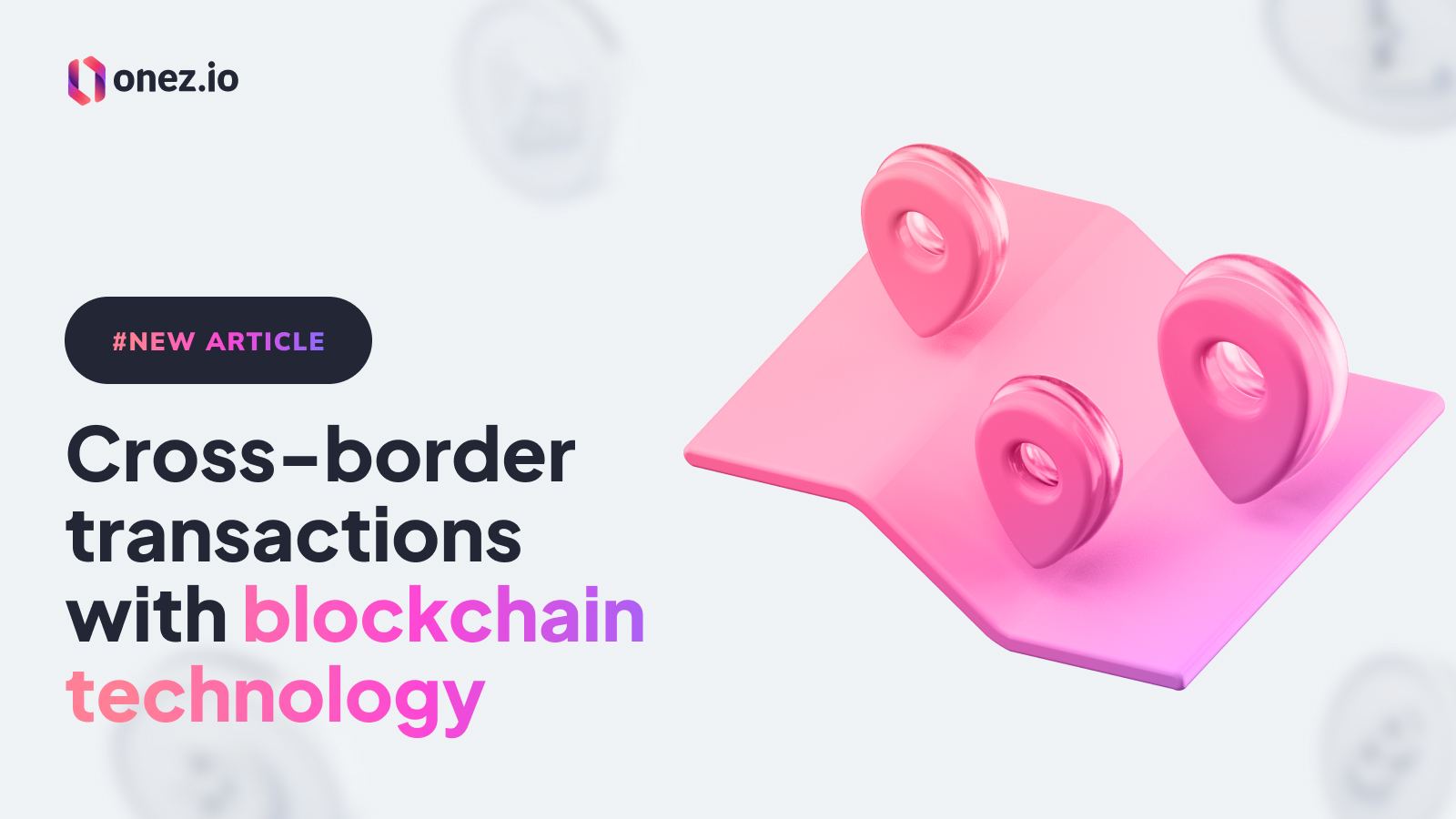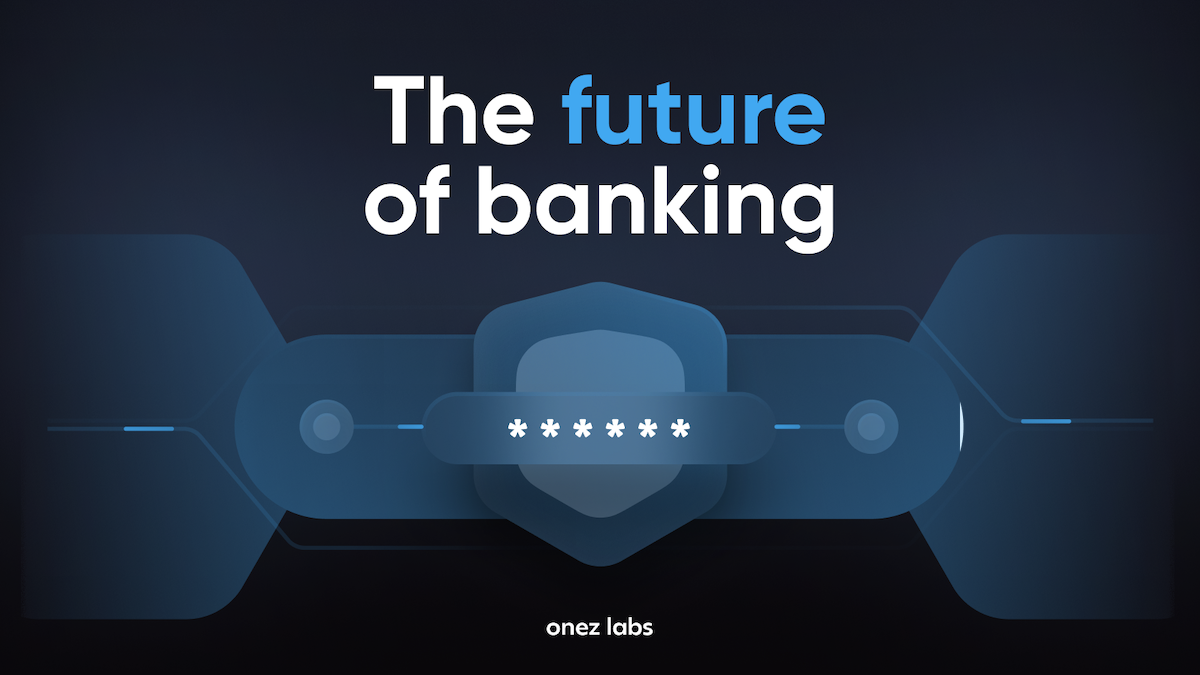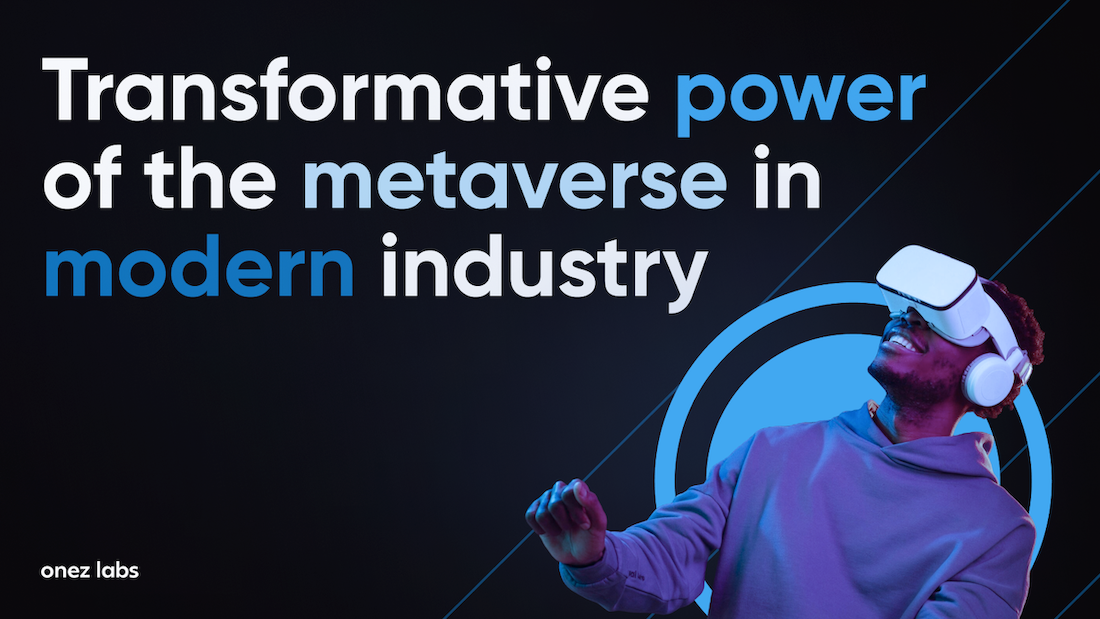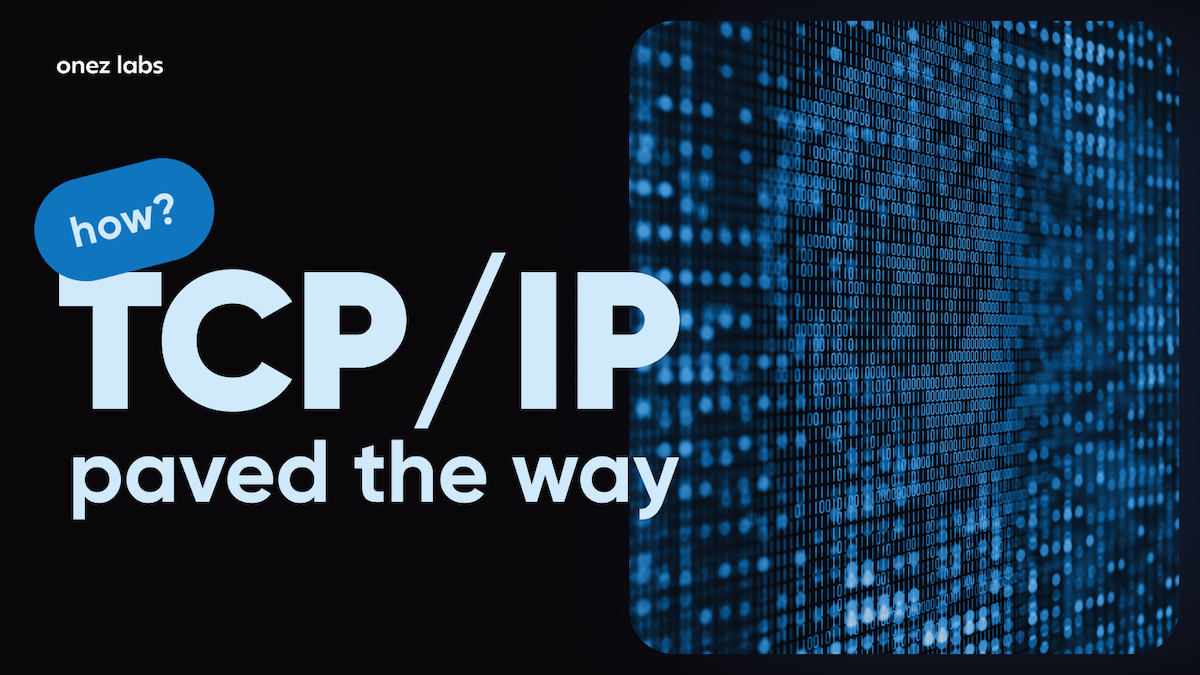Table of Contents
- Introduction
- How Blockchain Payments Work
- Blockchain Transaction Processing
- Blockchain in Money Transfer
- Step-by-Step Guide on Blockchain Transactions
- Onez’s Blockchain Solutions for Cross-Border Payments
- Conclusion
Introduction
Technology is improving at a pace never seen before, businesses are expanding to new markets, and consumers are as comfortable as ever moving around the world. Despite this, cross-border payment methods remain an afterthought in the digitization process. If we look into it deeply enough we can see that the 40-year-old legacy banking system is still not capable of adapting to the new fast-paced economy. This means that businesses struggle to offer their customers an efficient and convenient way to pay for goods and services with traditional payment systems.
This is where blockchain payment processing comes into play. Blockchain technology can help businesses overcome all of the pain points that come with traditional cross-border payment methods. In this article, we will discuss all of the benefits that come with blockchain-based payment systems, how they work, and how businesses can adopt them to get the most benefit.
How Blockchain Payments Work
In terms of how it works with crypto payment gateway services, this is the whole process:
- Customers choose to make a payment via a cryptocurrency payment gateway.
- At the moment of the transaction, customers pay the current fair market value of the chosen digital currency.
- The blockchain-based payment system swiftly converts the crypto coins into a currency preferred by the recipient.
- The converted funds are then transferred to your account with the blockchain payment processing provider.
- The payment processing provider, at agreed intervals, deposits the converted funds into your traditional bank account.
In the realm of cross-border payments, this system offers exceptional transparency to businesses. The hassle of dealing with exchange rates or market fluctuations becomes obsolete. Transactions occur swiftly, typically within minutes, at the most favorable rates, as unnecessary intermediaries are eliminated from the process.
Blockchain Transaction Processing
The process of cryptocurrency transaction processing from start to finish can be explained in three main stages: creating, broadcasting, and confirming. Let’s go over all three stages in straightforward and easy-to-understand terms.
- Creating
The creation of the transaction itself is where we start the journey of the crypto transaction process. This part is the most familiar and obvious to those users who have made at least one transaction in the past. At this point, the sender has to identify three main points that are required by cryptocurrency transactions: the sender’s address (usually included in the transaction by default), the amount of cryptocurrency a user is sending, and a destination address.
After all three requirements are fulfilled by a user, the crypto wallet provides the details to the blockchain network. This is when we consider the first stage of blockchain transaction processing to be done.
- Broadcasting
As we have finished the first stage of the blockchain transaction creation we enter a stage of broadcasting. We consider this stage to be started when the sender of the transaction hits the “send” button on their crypto wallet interface.
The main objective of the broadcasting stage is to validate the transaction and assure its validity. At this point, all of the computers that are on the network (also called nodes) are working to validate digital signatures of the created transaction. This is done to ensure that there is no fraud. Additionally, to ensure that there is no fraud the nodes are checking the sender’s crypto wallet’s funds and if there are enough of them to make the transaction.
Once all of the checks during the broadcasting stage are made, the transaction is added to the blockchain’s memory pool. When the transaction is added to the memory pool all it has to do is wait its turn until the validators can confirm it.
- Confirming
Confirmation is the last and final step in blockchain transaction processing. When it goes through the initial two stages and completes the third, that’s when the transaction is added to the blockchain.
For the transaction to be confirmed it has to be validated by the consensus algorithm. In the case of the Bitcoin blockchain (it uses a proof-of-work consensus algorithm), miners are the ones who verify the transactions by using high-powered computers to solve cryptographic equations. The miner who successfully solves the equation confirms the transaction, bundles it up with other of his confirmed transactions, and adds the new block to the chain.
When the transaction completes all of the three stages, it officially has been processed and it can be validated by anyone on the blockchain.
The great thing about the transactions that are made on a blockchain is that they are recorded and immutable. The blockchain technology and blockchain transactions offer a lot of trust and integrity. What is even more impressive is that all of the transactions made on blockchain are visible to everyone. This in return helps to create an incredibly safe and transparent ecosystem.
Lastly, when talking about cryptocurrency transaction handling we have to mention its efficiency. Blockchain technology helps to avoid any additional third parties when it comes to transaction processing. Due to this reason, transactions are almost instantaneous, providing fast speeds and avoiding all the costs that come with traditional cross-border transactions.
Blockchain in Money Transfer
Conventionally, cross-border payments heavily depend on third-party verifications since you have to deal with two banks from two different countries. Just like citizens of different countries have distinct habits, customs, and traditions, banks from two different countries have different requirements and regulations. If you choose to use a commercial bank for cross-border payments, it will involve the use of clearinghouses and other intricate intermediaries. This usually means slow transactions and high processing costs due to many parties being involved in one process.
Many could argue that there is a possibility to make cross-border transactions with such e-payment systems as PayPal or MoneyGram. Many consider them to be faster than the traditional bank. However, these e-payment providers are prone to sensitive data leakage and are notorious for shutting down business accounts for very little reason. Cases like these can put businesses in a very tough spot.
So if you decide to make a cross-border payment via the traditional route, it means that a transaction between two banks will need a lot of due diligence. That said, a traditional cross-border payment can take days and usually will.
On the flip side, blockchain-based payment systems simplify this process. What blockchain does, is it uses a decentralized network of computers to authenticate and process transactions. The computers that make up this network are spread out all over the world. This cuts out the need for intermediaries and speeds up the transaction process. What used to take days to process and authenticate a transaction via the traditional route, now takes minutes or in some cases even seconds.
So cross-border transactions are where blockchain payment processing shines. The benefits of cryptographic payment solutions are apparent:
- Blockchains operate around the clock without any breaks.
- Unlike their traditional counterparts, their fees are minimal.
- Anyone who has an internet connection can make a payment (customers don’t need to jump through hoops to make a simple payment)
Step-by-Step Guide on Blockchain Transactions
Cryptocurrency transactions follow a specific set of actions depending on the blockchain. For simplicity purposes let’s see how a Bitcoin payment processing would work when a transaction is made.
- A user starts a transaction using their cryptocurrency wallet or a payment gateway.
- The transaction is sent to a global network of computers called nodes.
- Nodes solve cryptographic equations to check if the transaction is valid.
- Once the transaction is verified, it is ten grouped with others into a block.
- The new block is linked to the previous one, forming a chain that records transaction history.
- The transaction is now considered complete and approved by all nodes.
All of the other blockchains will have a more or less similar transaction processing process as the Bitcoin blockchain. But what is wonderful about such transaction processing is how much more efficient, secure, and transparent it is to non-blockchain-based payment systems.
Onez’s Blockchain Solutions for Cross-Border Payments
When it comes to Onez, we offer a white-label crypto payment gateway that makes accepting digital asset payments easy and low-cost to businesses of all sizes. Our web3 payment gateway stands out from the crowd when it comes to cross-border payments and here is why.
Low fees
Onez offers crypto payment gateway services with some of the lowest fees in the industry. Our goal is to make crypto payments available to everyone. Thus, we focus on helping businesses to keep most of their profits with no strings attached.
Ease of use
Onez digital currency payment solution was created with simplicity in mind. Businesses can start accepting cross-border digital asset payments in a few easy steps. To make the journey of accepting blockchain payments even easier, we have a dedicated customer support team that will hold your hand at every step of the journey.
Security
We are proud of the standard of security that we uphold when it comes to cross-border payments. With state-of-the-art encryption and fraud prevention, your and your customers’ funds and data are protected at all times.
Conclusion
Blockchain technology and blockchain payment processing are like a game-changer fixing problems in how we make payments across borders. It’s clear, works well all the time, and costs less, making it a good option for businesses dealing with international transactions. As the world gets more connected, using blockchain for payments becomes really important. It helps businesses do transactions that are safe, easy to see, and happen quickly.
This change in how we make cross-border payments using blockchain is like a big shift towards a more straightforward and tech-savvy way of handling money.
Frequently Asked Questions
What makes blockchain technology more efficient for cross-border transactions?
Blockchain technology eliminates the need for intermediaries in the transaction process, which speeds up transfers and reduces costs. Transactions can be completed in minutes or even seconds, compared to the days it can take with traditional banking systems.
How secure are blockchain transactions?
Blockchain transactions are highly secure due to the use of advanced encryption and fraud prevention techniques. Every transaction is recorded and immutable, meaning it cannot be altered once it is added to the blockchain.
What is a crypto payment gateway?
A crypto payment gateway is a platform that enables businesses to accept digital asset payments. It works by converting the cryptocurrency into a preferred currency and transferring the funds to the recipient’s account.
Can anyone use blockchain for payments?
Yes, anyone with an internet connection can make a payment using blockchain technology. There are no geographical restrictions, which makes it particularly useful for cross-border transactions.
What is Onez’s role in blockchain-based payments?
Onez offers a white-label crypto payment gateway that makes accepting digital asset payments easy and low-cost for businesses of all sizes. It provides a secure and efficient solution for cross-border payments.



